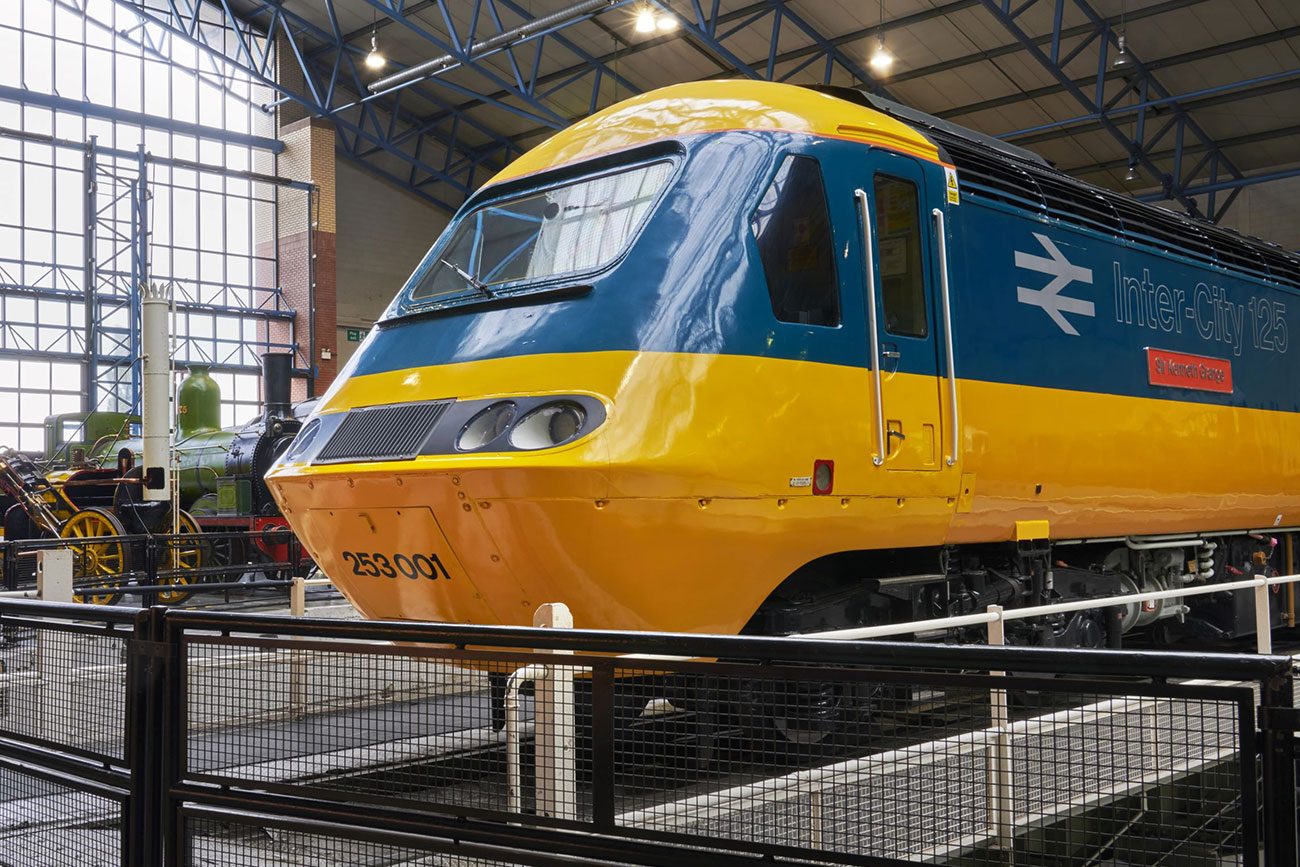Who remembers the railways filled with trains pulled by engines like this one?
The InterCity 125 was an icon of the Seventies and Eighties. Star of the relentless ‘This is the age of the train’ TV ads (fronted by someone who shall remain nameless), it was credited with reversing the fortunes of British Rail.
Also known as the HST, or High-Speed Train, this version of the loco – Class 43 no. 43002, Sir Kenneth Grange – has joined the National Railway Museum’s collection after more than 40 years in service.
Considered ‘Britain’s most influential modern locomotive’, it has been donated by Angel Trains and Great Western Railway.
The engine is officially named after the train’s designer Sir Kenneth Grange, who created the iconic wedge-shaped nose cone.
Flying banana
The locomotive is the first production HST and carries the original yellow and blue British Rail livery which led to the train’s nickname – ‘the Flying Banana’.
The HST was initially the fastest train in Europe and internationally, second only to the Japanese Bullet Train. The HST class still holds the world diesel speed record of 148mph which was set on 1 November 1987.
The HST power car is now on static public display at the centre of the National Railway Museum’s Great Hall, alongside an exhibition that tells the story of British Rail.
Head curator at the NRM Andrew McLean said:
-
This is one of our most significant acquisitions, and I am delighted to be able to display the HST power car, Sir Kenneth Grange here in York.
It is fair to say that this train revolutionised rail travel and helped shape British society, bringing people and communities together.
Still going

The High-Speed Train has proved so popular, that more than 40 years after entering service, they can still be found hauling passenger services on routes across the UK.
After decades of work on the Great Western network, the Sir Kenneth Grange is being replaced with the latest Class 800 Intercity Express Trains manufactured in the UK by Hitachi.

MD of Great Western Railway Mark Hopwood said:
-
When introduced in 1976, these trains were a step change in InterCity travel across the country with new levels of comfort and faster journeys and the new Intercity Express Trains are building on the standards that these set.
This particular locomotive has been a firm favourite since we returned it to its original livery in 2016 and we are really pleased to see this particular locomotive joining the National Railway Museum’s collection.
As one of Britain’s finest industrial designers, Kenneth’s streamlined design helped make the train a success with the public.
The train quickly became the backbone of high-speed rail routes, sparking a renaissance in rail travel and turning around the ailing British Rail.
